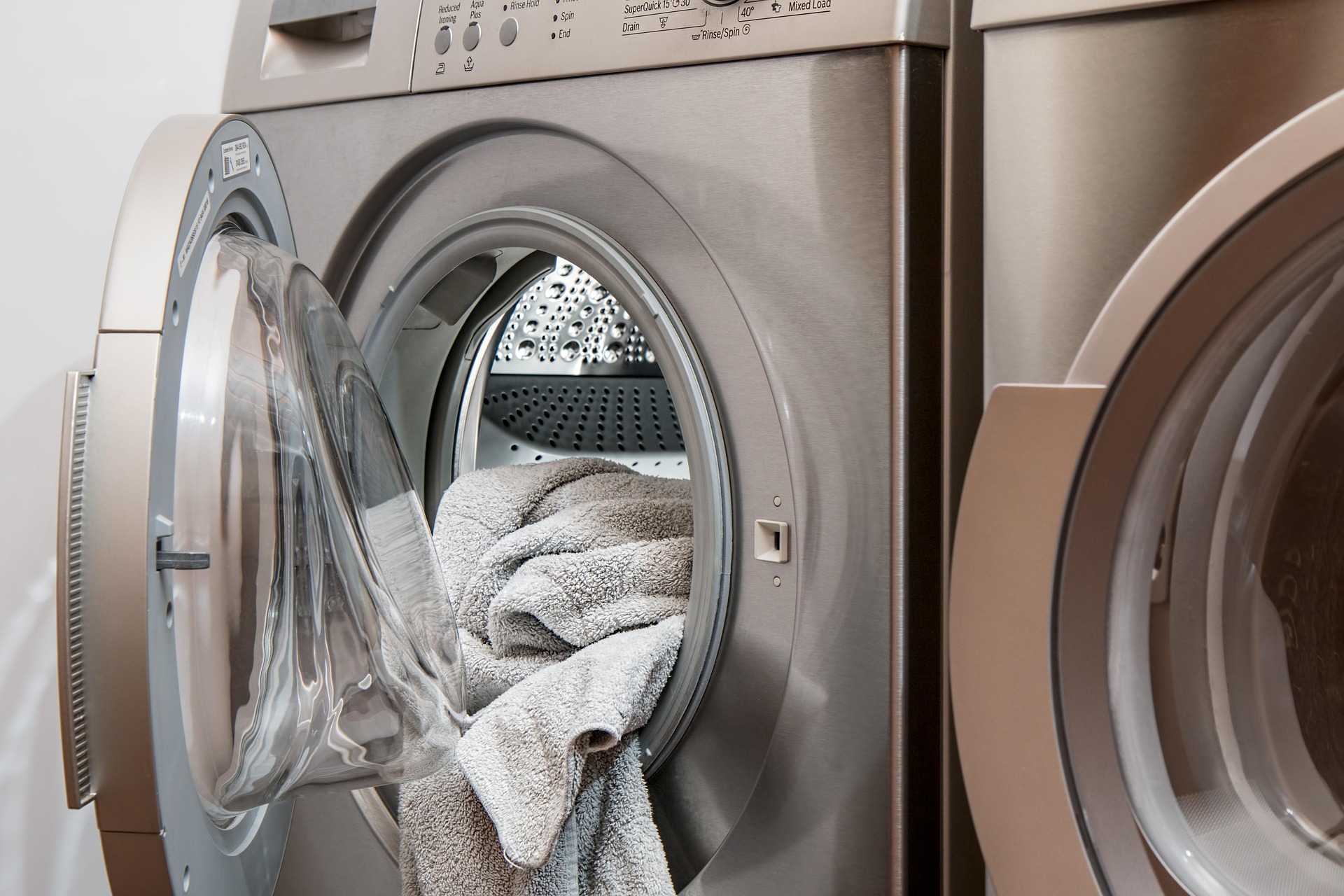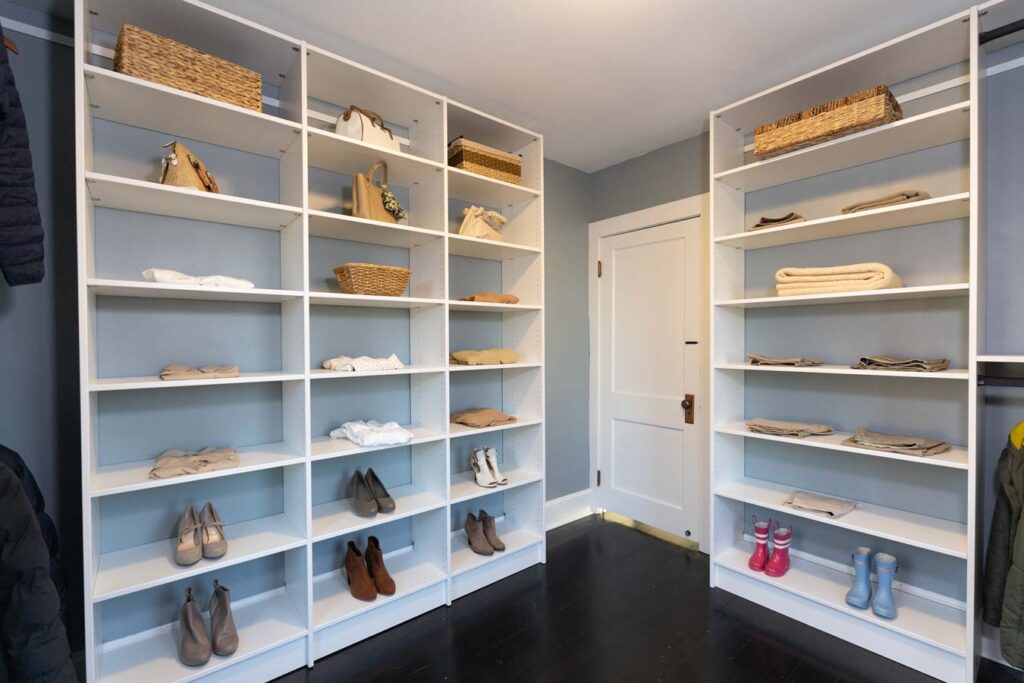Converting a closet into a laundry room is one of the smartest ways to reclaim unused space and add practical functionality to your home. Whether you’re limited by square footage or looking for a convenient secondary setup, a well-executed conversion can make your routine easier and your home more organized.
The process requires more than just stacking a washer and dryer, though! You also need to consider ventilation, clearance, and efficient layout planning — so here’s how to do it right. If you’re ready to explore custom storage options or need help planning your layout, schedule a free consultation with Renuity today.
Start With the Right Closet
Not all closets are suitable for a washer and dryer. Before you commit to the project, evaluate the size, location, and wall structure of the closet. A standard hall or linen closet can often be repurposed for compact units, while a bedroom or utility closet may provide additional width or depth for side-by-side machines.
Minimum space considerations:
- Stacked units: Require roughly 24-28 inches in width and 30-34 inches in depth
- Side-by-side units: Need at least 56-60 inches in width
- Front clearance: Leave 36 inches in front for comfortable loading and unloading
Check for wall studs, proximity to existing water lines or drains, and adjacent electrical access, all of which can have a big impact on your project’s feasibility.
Understand the Functional Requirements
If your closet is located near a bathroom or kitchen, tapping into existing water supply and drainage can simplify the process. You’ll also need adequate electrical capacity for both washer and dryer units.
Ventilation is another key concern. For closets with limited airflow, consider louvered doors or installing an exhaust fan to help prevent moisture buildup. If exterior venting isn’t possible, ventless dryer models are an option that helps maintain code compliance and keeps installation streamlined.
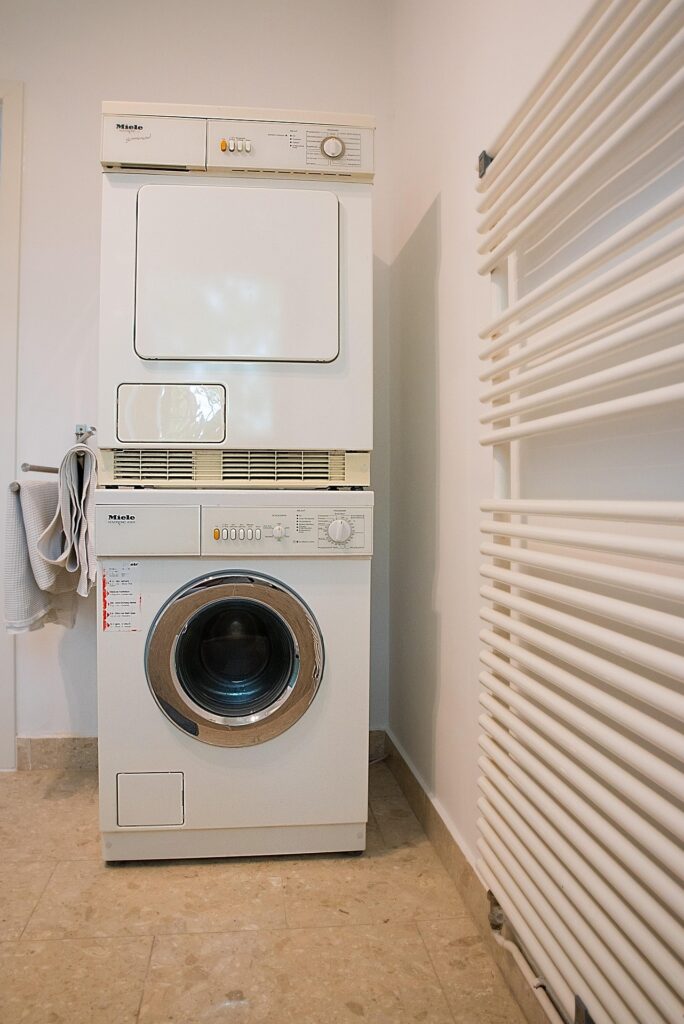
Maximize Utility With Smart Layout Planning
Once your technical needs are addressed, turn to layout efficiency. Your goal should be to accommodate both machines and storage without crowding the space.
These layout tips can help you set up a functional closet for washer and dryer storage and practical use:
- Stack the machines vertically if square footage is tight
- Use open shelves above or beside the machines for baskets, detergent, and supplies
- Install a folding station on the back of the door or as a drop-down counter
For layout planning inspiration, look to Renuity’s small laundry room storage ideas for clever strategies that work in tight spaces. If you’re starting from scratch and thinking about how to structure the space, our guide to how to build shelves in your laundry room is a great place to start planning for vertical storage early.
If your remodel includes changes to the surrounding cabinetry, explore custom solutions from our closets services to make full use of vertical space.
Integrated Storage Makes All the Difference
Even small closets can become functional hubs when storage is prioritized from the start. Pull-out drawers, shallow shelves, and wall-mounted organizers help reduce clutter. Avoid deep bins that crowd the washer and dryer doors or obstruct air circulation. Slim solutions with intentional placement yield the best long-term functionality.
To maintain day-to-day order, consider how you’ll manage supplies. Our blog on storage for laundry supplies offers ideas for organizing detergent, dryer sheets, and other essentials in easy-to-access containers.
Renuity specializes in laundry room storage that makes the most of tight quarters, with solutions tailored to your space and laundry habits.
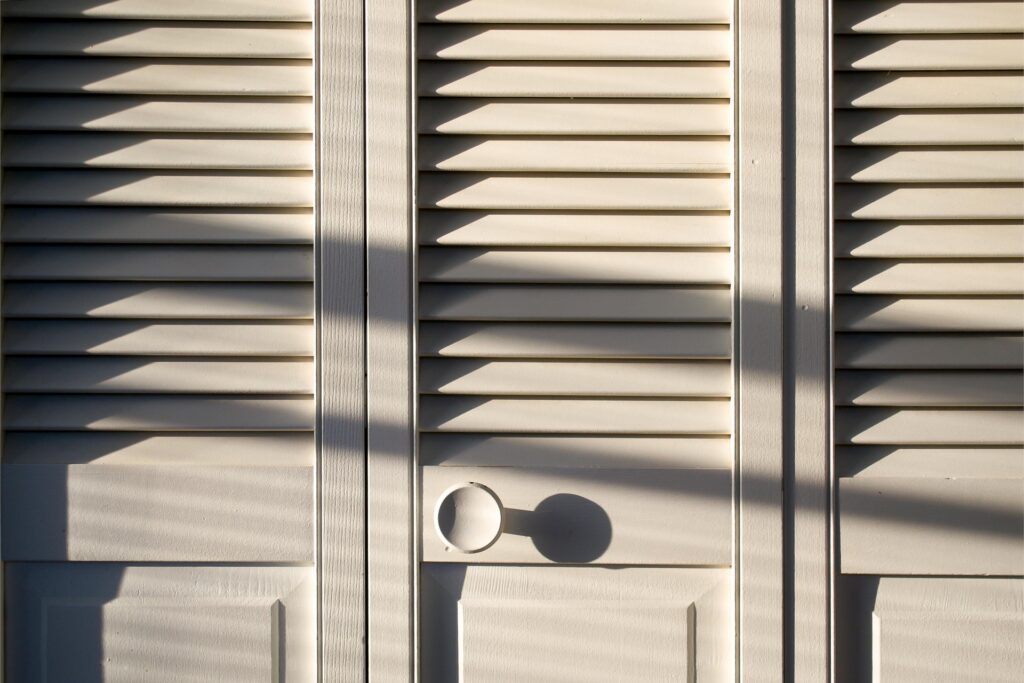
Designing a Closet Laundry Room That Fits Your Home
When you convert a closet into a laundry room, functionality is only half the equation. Aesthetics matter, especially if the space sits in a hallway, guest room, or shared living area. Rather than leaving the machines exposed or relying on a generic curtain, consider how custom design can elevate the look and feel of your new laundry nook.
Ideas for cohesive closet-and-laundry-room design:
- Custom cabinet fronts to conceal machines when not in use
- Matching hardware and finishes that tie into nearby rooms
- Integrated task lighting for visibility that feels intentional, not industrial
- Neutral or woodgrain melamine shelving that complements existing trim
Renuity’s custom closet solutions can be tailored to reflect your home’s style, from sleek modern layouts to warm, traditional cabinetry. Even small touches like concealed hampers or coordinated drawer pulls can make your laundry room in a closet feel like it belongs in the space, not just shoved into it.
This is especially important in open-concept homes or multi-use areas where laundry zones need to blend in rather than stand out. With thoughtful design, your converted laundry closet can function like a utility room while looking like a natural part of your home’s interior.
Consider Future-Proofing Your Setup
If you’re turning a closet into a laundry room as part of an aging-in-place strategy or a multi-generational setup, it’s important to consider features that enhance accessibility and ease of use. Low-profile thresholds can make entry smoother, while front-loading machines with elevated bases reduce the need to bend or crouch. Pull-out baskets and folding surfaces at waist height also improve comfort and efficiency.
Future-proofing isn’t just about physical access; it’s about simplifying daily routines for users of all ages.
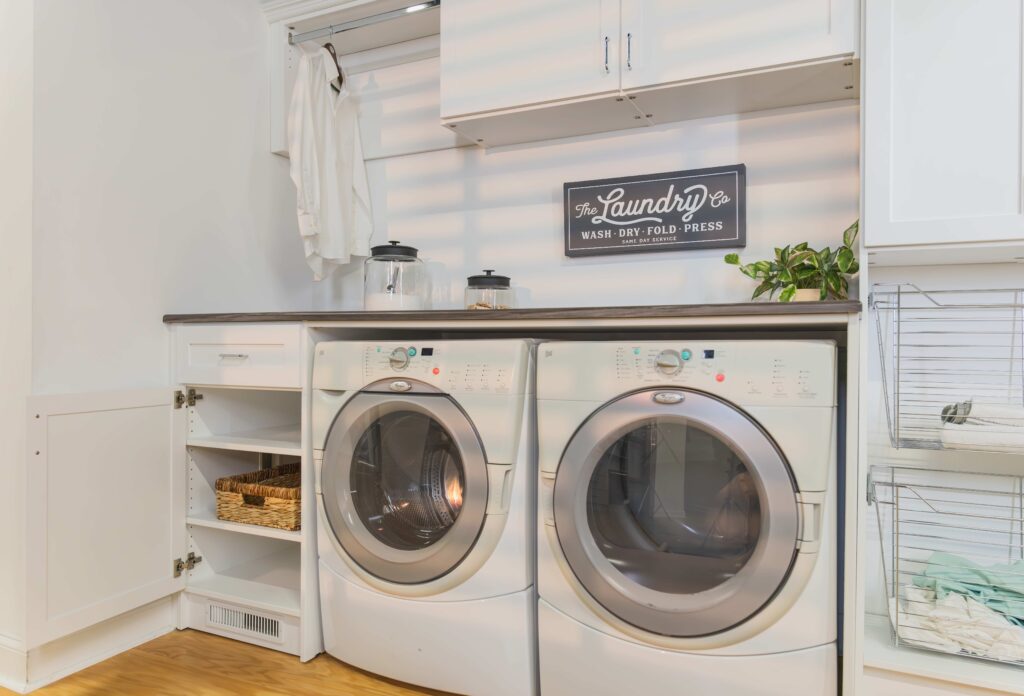
Make Every Square Foot Count
A laundry room in a closet may sound unconventional, but when done correctly, it enhances both form and function. With careful attention to space planning, storage, and thoughtful equipment selection, even a reach-in or hall closet can become a well-organized laundry zone. For additional small-space tips, check out our guide on how to store laundry supplies in a compact room.
Whether you’re remodeling for convenience, space optimization, or accessibility, Renuity can help make it happen. Contact us to schedule your free consultation. We’ll evaluate your current closet and help determine if it’s a candidate for conversion into a compact, fully functional laundry space.
